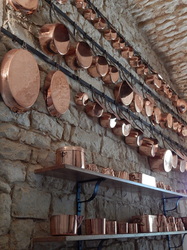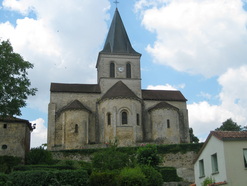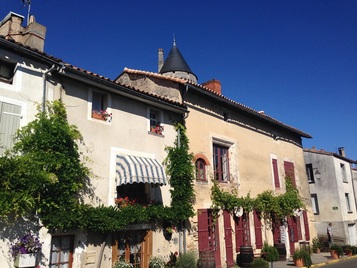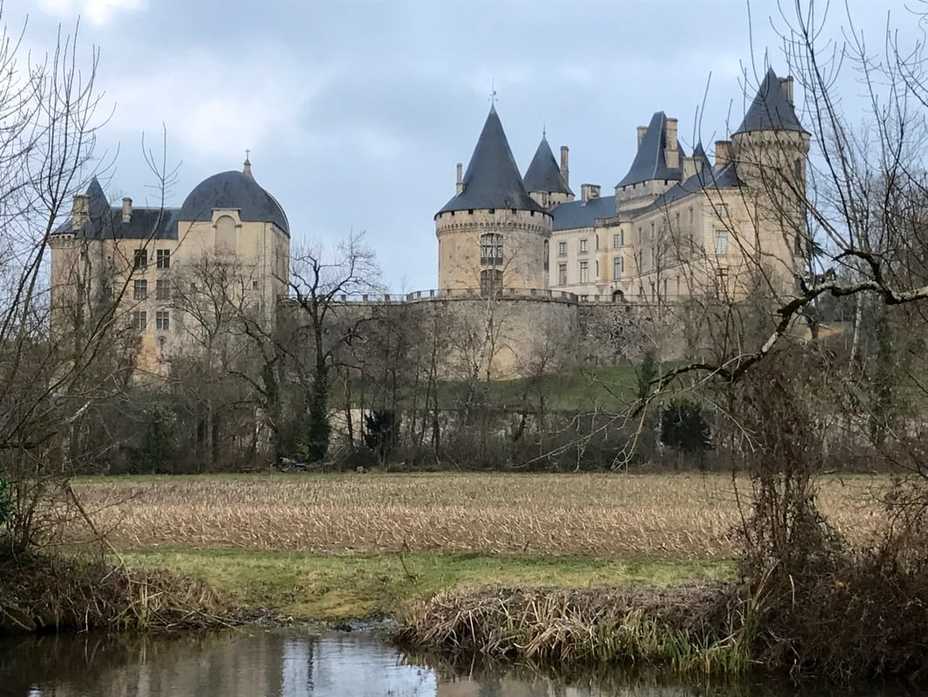things to do and see - in the village
|
Walk the medieval streets:
Verteuil (pronounced "Ver - toy") is a perfect village to wander around. Discover its old streets, many of which have fairly conventional names that are descriptive of the activities that went on there, or commemorate local noteworthies such as the first mayor Docteur Deux Despres, or Louis Chrétien who pioneered the electrification of the town. Château de Verteuil There has been a château on this site since at least the 11th century, and this has belonged to the locally important La Rochefoucauld family, although during the Hundred Years’ War it was given up to the English during the Calais Treaty of 1360, until 1385. A succession of sieges saw it change hands between France and England several times until the English were driven out by Charles VII, King of France with the château practically in ruins! |
However, there are some oddities – Impasse du Bocq means ‘Clog alley’. Prior to paving, it was apparently so muddy that clogs were the only sensible footwear. Mud seems to have been a major problem in old Verteuil – Chemin des Dames (the lane above our house) is a raised road leading to the church, accessed by a staircase from Rue du Temple (our street). Apparently Rue du Temple was so well used by farmers and their herds that ladies going to church could not avoid soiling the hems of their skirts, so the upper road was installed for their convenience.
Similarly, Rue du Sénéschal was built to enable the steward, whose job it was to collect tolls from those entering the village, to get back safely to his office. Presumably the narrow streets presented too many tempting opportunities to the "down and out"!
The Rue de la Tremblai suggests it was frequented by doddering pedestrians; in fact it simply led to a wood containing aspens (trembling poplars). The Halles (covered market) which gave its name to the main street was demolished in the late 18th century to improve traffic circulation. |
|
Construction of the present château began in the mid-15th century with its five conical shaped towers and watchtower, capped by black slate roofs, (and has been added to and altered subsequently). It is, unusually, triangular in ground-plan and the gardens were laid out in the 19th century. The château was declared an Historical Monument in 1966.
|
|
It has played host to a number of distinguished visitors, including King Francis 1, and King Louis XIII. Sadly, it is not open to the public although guided tours around the grounds and the château kitchen is available most of the year (3pm daily) and is highly recommended (€6 each in 2017). Tickets are available at La Régie (the wine cellar and bar) in the main street.
A celebration of gardens and gardening is held in the grounds of the château, usually on the first weekend in May. A two day event with plants, trees, sculptures, garden tools and landscaped areas, it’s well worth a visit. We've experienced a wonderful fairy tale-like fire works display from the bridge over the river in the middle of the village around the Assumption fête in August. The sky lit up magically over the château. |
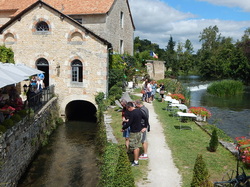
Moulin de Verteuil: the renovated mill, at 4 Allée du Moulin, remains a working mill. You can walk around the workings of the mill and buy its own milled flour. The mill also serves tea and coffee and there is a restaurant where you can eat in the beautiful river side precinct.
|
,La Régie, at 48 rue des Halles, in what was once the steward’s home of the Château de Verteuil, is the pride of Sébastien Feuillade. As well as serving tea and coffee, there is now a lovely wine bar. He also champions local food products including cognacs, jams, honey and vinegars, as well as saffron that he grows himself. He also organises tours of the château including the château grounds, kitchen and chapel.
|
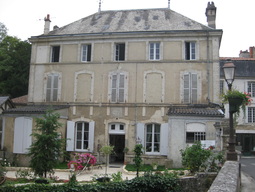
Nearby, in the former old post office (1 rue du Temple), is La Demeure des Roses where Virginie Stefani and her husband Benoit have created an Aladdin’s cave of very French artisan artefacts and gifts from candles to bed linen. The shop is a creation of white, silver, grey and cream and a light perfume pervades throughout. Virginie teaches art and her floral paintings which are for sale adorn the walls. We have a couple of Virginie's paintings both at home in Australia and also in the house in Verteuil. Benoit manages a lovely café on the edge of the river - it is our favourite for spending time reading, eating, drinking etc. For the last couple of summers Benoit and Virginie host evening soirées with good food and music - if you have the chance, make sure you go!!
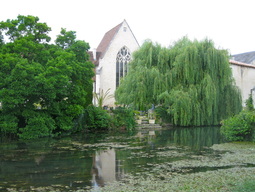
The 15th century Le Couvent des Cordeliers is a former Franciscan monastery which was the burial place of the La Rochefoucauld family until the Revolution, and is now a luxury hotel.
Text on this page is largely sourced from: http://www.the-french-atlantic-coast.com/what-to-see/beautiful-villages/verteuil-sur-charente/#ixzz3O1zPSK00


